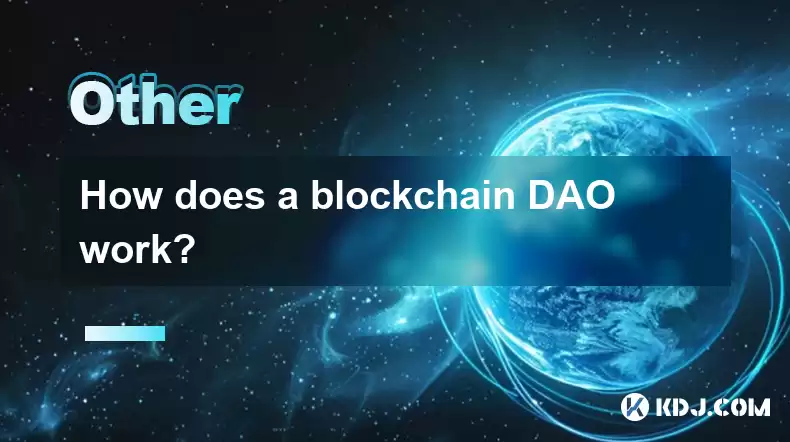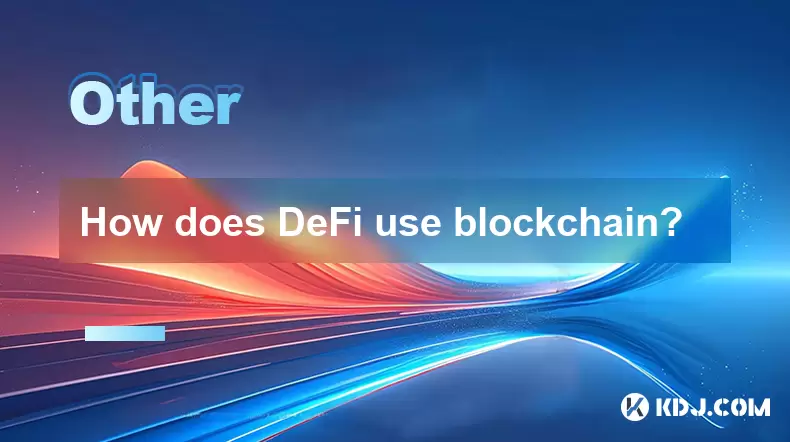-
 Bitcoin
Bitcoin $113700
0.66% -
 Ethereum
Ethereum $3471
-0.04% -
 XRP
XRP $2.885
-0.16% -
 Tether USDt
Tether USDt $1.000
0.05% -
 BNB
BNB $747.8
-0.10% -
 Solana
Solana $161.1
-0.98% -
 USDC
USDC $1.000
0.02% -
 TRON
TRON $0.3255
-0.22% -
 Dogecoin
Dogecoin $0.1980
1.46% -
 Cardano
Cardano $0.7237
2.87% -
 Hyperliquid
Hyperliquid $37.79
0.87% -
 Stellar
Stellar $0.3941
5.48% -
 Sui
Sui $3.422
1.35% -
 Chainlink
Chainlink $16.14
1.97% -
 Bitcoin Cash
Bitcoin Cash $540.7
1.55% -
 Hedera
Hedera $0.2432
4.26% -
 Ethena USDe
Ethena USDe $1.001
0.04% -
 Avalanche
Avalanche $21.31
-0.06% -
 Toncoin
Toncoin $3.624
1.19% -
 Litecoin
Litecoin $109.0
0.76% -
 UNUS SED LEO
UNUS SED LEO $8.967
0.09% -
 Shiba Inu
Shiba Inu $0.00001217
1.84% -
 Polkadot
Polkadot $3.584
1.85% -
 Uniswap
Uniswap $9.123
2.03% -
 Monero
Monero $294.7
0.87% -
 Dai
Dai $0.0000
0.01% -
 Bitget Token
Bitget Token $4.322
0.60% -
 Pepe
Pepe $0.00001048
2.65% -
 Cronos
Cronos $0.1329
2.05% -
 Aave
Aave $257.0
1.88%
How does a blockchain DAO work?
A blockchain DAO uses smart contracts to automate governance and decision-making, offering transparency and decentralization but facing challenges like security and scalability.
Apr 13, 2025 at 12:43 am

A blockchain Decentralized Autonomous Organization (DAO) is a revolutionary concept that leverages blockchain technology to create a new form of organizational structure. Unlike traditional organizations, a DAO operates without a central authority, relying instead on smart contracts to automate decision-making and governance. This article will delve into the mechanics of a blockchain DAO, exploring how it functions, its key components, and the processes involved in its operation.
What is a Blockchain DAO?
A blockchain DAO is an entity that exists on a blockchain and is governed by smart contracts. These smart contracts are self-executing programs that automatically enforce the rules and execute decisions based on the consensus of its members. The primary goal of a DAO is to operate transparently and autonomously, with all actions recorded on the blockchain for public verification.
Key Components of a Blockchain DAO
The foundation of a blockchain DAO is built on several key components:
Smart Contracts: These are the backbone of a DAO, defining the rules, governance, and operational logic. They are coded to execute automatically when certain conditions are met, ensuring that the DAO operates as intended without human intervention.
Tokens: Most DAOs use tokens to represent ownership or voting rights. These tokens are often issued during an Initial Coin Offering (ICO) or through other means, allowing members to participate in the governance of the DAO.
Governance Mechanism: This is the process through which decisions are made within the DAO. It typically involves voting by token holders, where proposals are submitted, and members vote on them using their tokens.
Treasury: A DAO often has a treasury, which is a pool of funds managed by the smart contracts. These funds can be used for various purposes, such as funding projects or rewarding contributors.
How a Blockchain DAO Operates
The operation of a blockchain DAO involves several steps and processes that ensure its smooth functioning:
Proposal Submission: Any member of the DAO can submit a proposal for consideration. This could be a new project, a change in governance rules, or any other action that requires the DAO's attention. The proposal is submitted through the DAO's interface, which is typically a decentralized application (dApp) on the blockchain.
Voting Process: Once a proposal is submitted, it enters the voting phase. Token holders can cast their votes based on the number of tokens they hold. The voting period is predefined in the smart contracts, and once it concludes, the results are tallied automatically.
Execution of Decisions: If a proposal receives the required number of votes, it is executed automatically by the smart contracts. For example, if the proposal is to fund a new project, the necessary funds are transferred from the treasury to the designated recipient.
Transparency and Accountability: All actions and transactions within the DAO are recorded on the blockchain, ensuring transparency and accountability. Members can audit the DAO's activities at any time, fostering trust and confidence in its operations.
Benefits of a Blockchain DAO
The use of a blockchain DAO offers several advantages over traditional organizational structures:
Decentralization: By eliminating the need for a central authority, a DAO empowers its members to have a direct say in its governance and operations. This leads to a more democratic and inclusive decision-making process.
Automation: Smart contracts automate many of the DAO's functions, reducing the need for manual intervention and minimizing the risk of human error or corruption.
Transparency: Since all actions are recorded on the blockchain, members have full visibility into the DAO's activities, enhancing trust and accountability.
Flexibility: DAOs can be designed to suit various purposes, from managing investment funds to coordinating decentralized projects. This flexibility allows them to adapt to different needs and objectives.
Challenges and Considerations
While blockchain DAOs offer significant benefits, they also come with challenges and considerations that need to be addressed:
Security: The smart contracts that govern a DAO must be thoroughly audited to prevent vulnerabilities that could be exploited by malicious actors. The infamous DAO hack of 2016, where millions of dollars were stolen, underscores the importance of security in DAO operations.
Legal and Regulatory Compliance: The legal status of DAOs varies by jurisdiction, and navigating the regulatory landscape can be complex. DAOs must ensure compliance with applicable laws to avoid legal issues.
Scalability: As DAOs grow, they may face challenges in scaling their operations and maintaining efficiency. Ensuring that the governance mechanism remains effective as the number of members increases is crucial.
Participation: Encouraging active participation from members is essential for the success of a DAO. Low voter turnout can lead to decisions that do not reflect the collective will of the community.
Examples of Blockchain DAOs
To better understand how blockchain DAOs work in practice, let's look at a few examples:
The DAO: Launched in 2016, The DAO was one of the first and most high-profile examples of a blockchain DAO. It aimed to operate as a decentralized investment fund, allowing token holders to vote on investment proposals. Despite its eventual downfall due to a security breach, The DAO highlighted the potential and challenges of this new organizational model.
Aragon: Aragon is a platform that enables the creation and management of DAOs. It provides tools for governance, treasury management, and more, making it easier for organizations to adopt a decentralized structure.
MakerDAO: MakerDAO is a decentralized lending platform that uses a DAO to govern its operations. Token holders vote on critical decisions, such as interest rates and collateral types, ensuring that the platform remains aligned with the community's interests.
Frequently Asked Questions
Q: Can anyone join a blockchain DAO?
A: It depends on the specific DAO. Some DAOs are open to anyone who holds their tokens, while others may have more stringent membership criteria. Always check the DAO's governance rules to understand the requirements for joining.
Q: How are disputes resolved within a blockchain DAO?
A: Dispute resolution in a DAO can vary, but it often involves a voting process where members decide on the best course of action. Some DAOs may also use external arbitration services or have built-in mechanisms for resolving conflicts within their smart contracts.
Q: What happens if a proposal fails to pass in a DAO?
A: If a proposal fails to receive the required number of votes, it is not executed. The DAO continues to operate as before, and members can submit new proposals or revisit the failed one in the future.
Q: Are there any costs associated with participating in a DAO?
A: Yes, participating in a DAO can involve costs, such as transaction fees for voting or submitting proposals. These fees are typically paid in the blockchain's native cryptocurrency, such as Ethereum's gas fees.
Disclaimer:info@kdj.com
The information provided is not trading advice. kdj.com does not assume any responsibility for any investments made based on the information provided in this article. Cryptocurrencies are highly volatile and it is highly recommended that you invest with caution after thorough research!
If you believe that the content used on this website infringes your copyright, please contact us immediately (info@kdj.com) and we will delete it promptly.
- Navigating the Meme Coin Mania: Cold Wallets, SHIB, and DOGE in 2025
- 2025-08-03 22:30:16
- Bitcoin's Price Fall and Scrutiny: What's a New Yorker to Think?
- 2025-08-03 22:30:16
- Shiba Inu's Resistance and Recovery Push: What's Next for SHIB?
- 2025-08-03 22:50:16
- Bitcoin, Hashcash, and Crypto Innovation: A Look at the Foundation and Future
- 2025-08-03 23:12:53
- Meme Coin Mania: Bonk, Pudgy Penguins, and the Quest for the Next Crypto Sensation
- 2025-08-03 22:50:16
- Binance Coin's Bull Run: Chain Upgrades, Token Burns, and the Road to $1000
- 2025-08-03 23:15:31
Related knowledge

What is the difference between on-chain and off-chain transactions?
Aug 02,2025 at 04:22pm
Understanding On-Chain TransactionsOn-chain transactions refer to digital asset transfers that are recorded directly on a blockchain ledger. These tra...

What is a node's role in a blockchain network?
Aug 03,2025 at 03:16pm
Understanding the Function of a Node in a Blockchain NetworkA node is a fundamental component of any blockchain network, acting as a participant that ...

What is the double-spending problem and how does blockchain prevent it?
Aug 02,2025 at 01:07pm
Understanding the Double-Spending ProblemThe double-spending problem is a fundamental challenge in digital currency systems where the same digital tok...

What is the difference between a blockchain and a database?
Aug 01,2025 at 09:36pm
Understanding the Core Structure of a BlockchainA blockchain is a decentralized digital ledger that records data in a series of immutable blocks linke...

How does DeFi use blockchain?
Aug 03,2025 at 11:15pm
Understanding the Role of Blockchain in DeFiDecentralized Finance (DeFi) relies fundamentally on blockchain technology to operate without intermediari...

How does blockchain handle scalability?
Aug 02,2025 at 02:58pm
Understanding Blockchain Scalability ChallengesBlockchain scalability refers to a network's ability to handle an increasing volume of transactions wit...

What is the difference between on-chain and off-chain transactions?
Aug 02,2025 at 04:22pm
Understanding On-Chain TransactionsOn-chain transactions refer to digital asset transfers that are recorded directly on a blockchain ledger. These tra...

What is a node's role in a blockchain network?
Aug 03,2025 at 03:16pm
Understanding the Function of a Node in a Blockchain NetworkA node is a fundamental component of any blockchain network, acting as a participant that ...

What is the double-spending problem and how does blockchain prevent it?
Aug 02,2025 at 01:07pm
Understanding the Double-Spending ProblemThe double-spending problem is a fundamental challenge in digital currency systems where the same digital tok...

What is the difference between a blockchain and a database?
Aug 01,2025 at 09:36pm
Understanding the Core Structure of a BlockchainA blockchain is a decentralized digital ledger that records data in a series of immutable blocks linke...

How does DeFi use blockchain?
Aug 03,2025 at 11:15pm
Understanding the Role of Blockchain in DeFiDecentralized Finance (DeFi) relies fundamentally on blockchain technology to operate without intermediari...

How does blockchain handle scalability?
Aug 02,2025 at 02:58pm
Understanding Blockchain Scalability ChallengesBlockchain scalability refers to a network's ability to handle an increasing volume of transactions wit...
See all articles

























































































